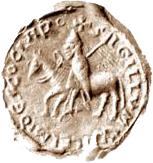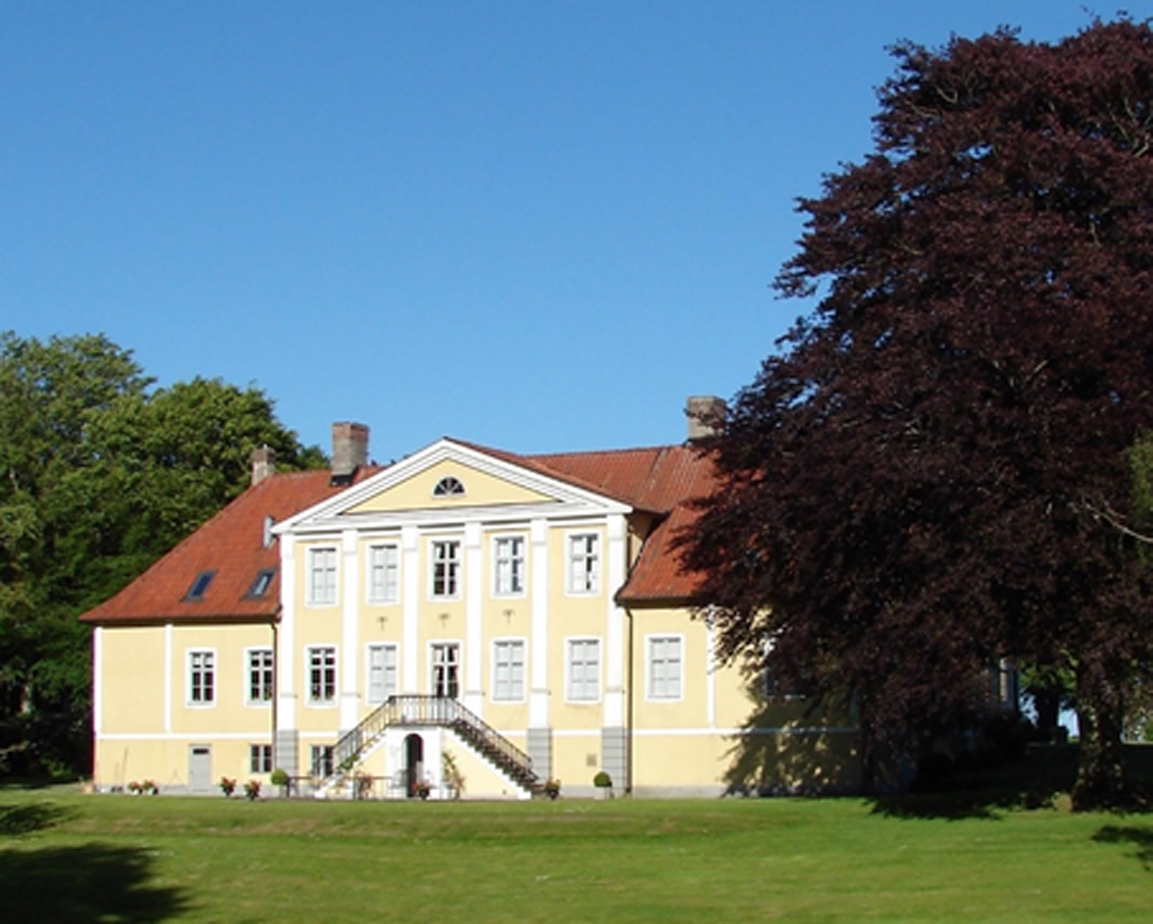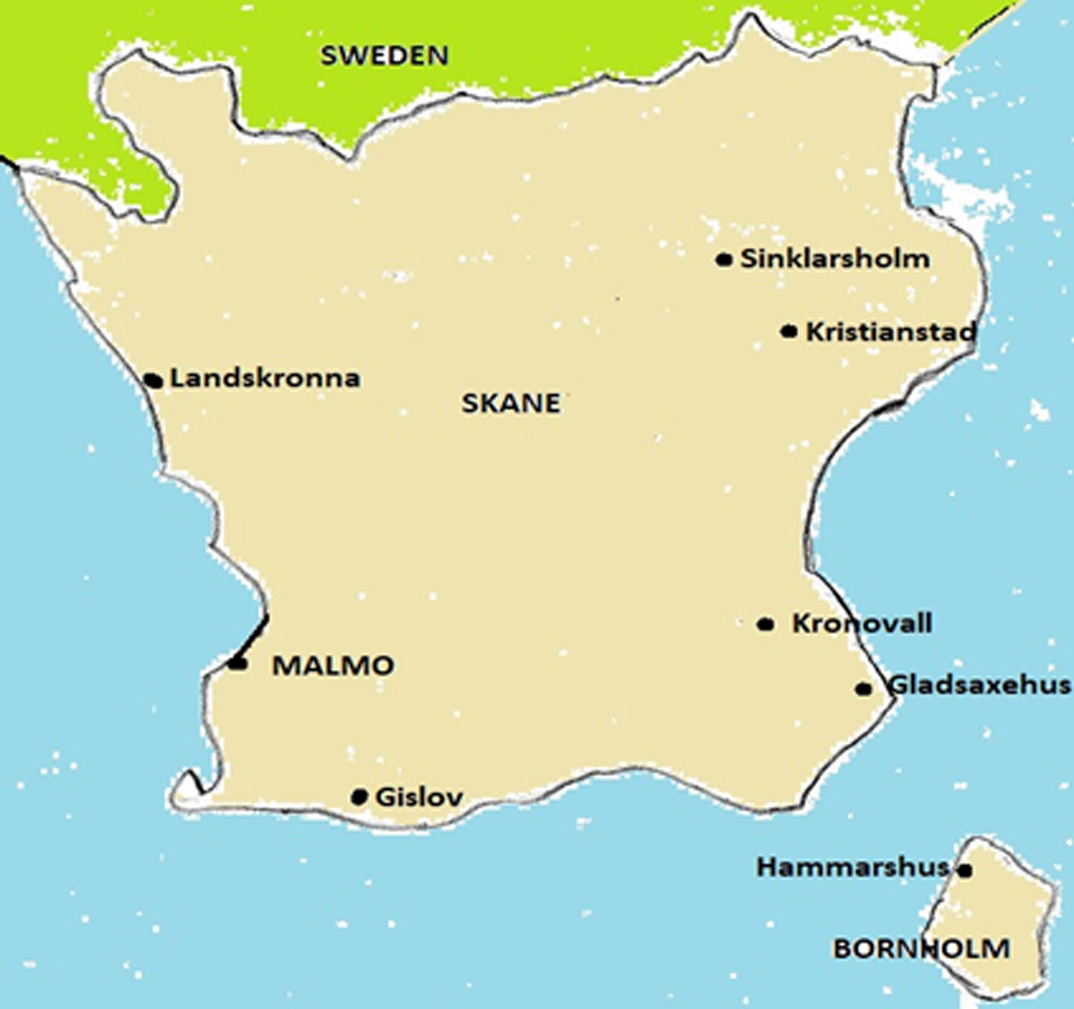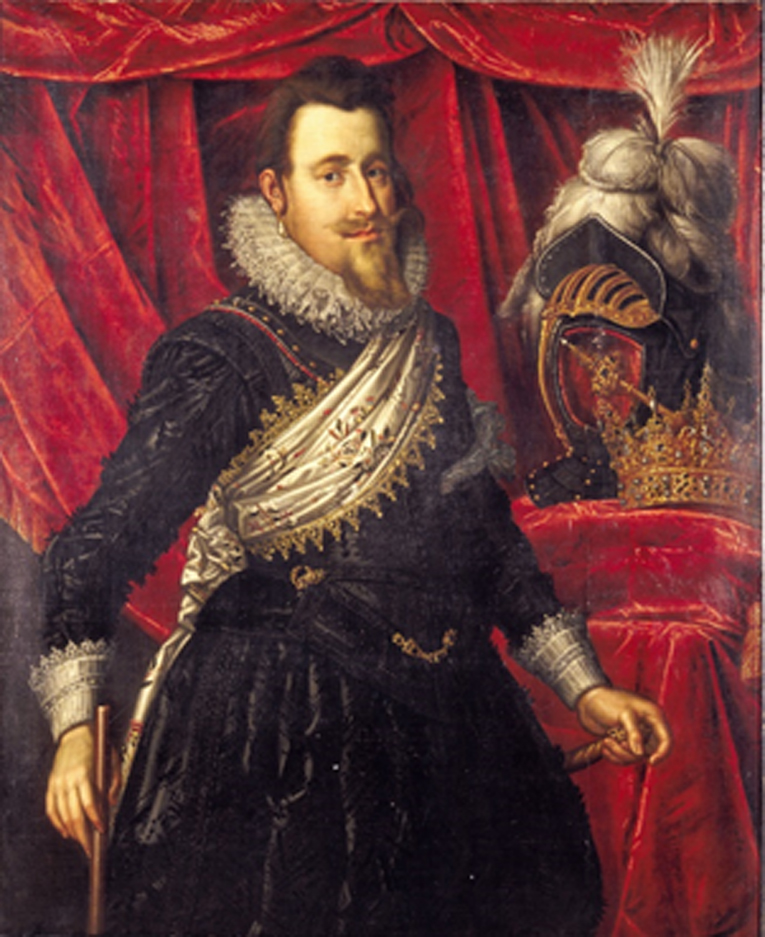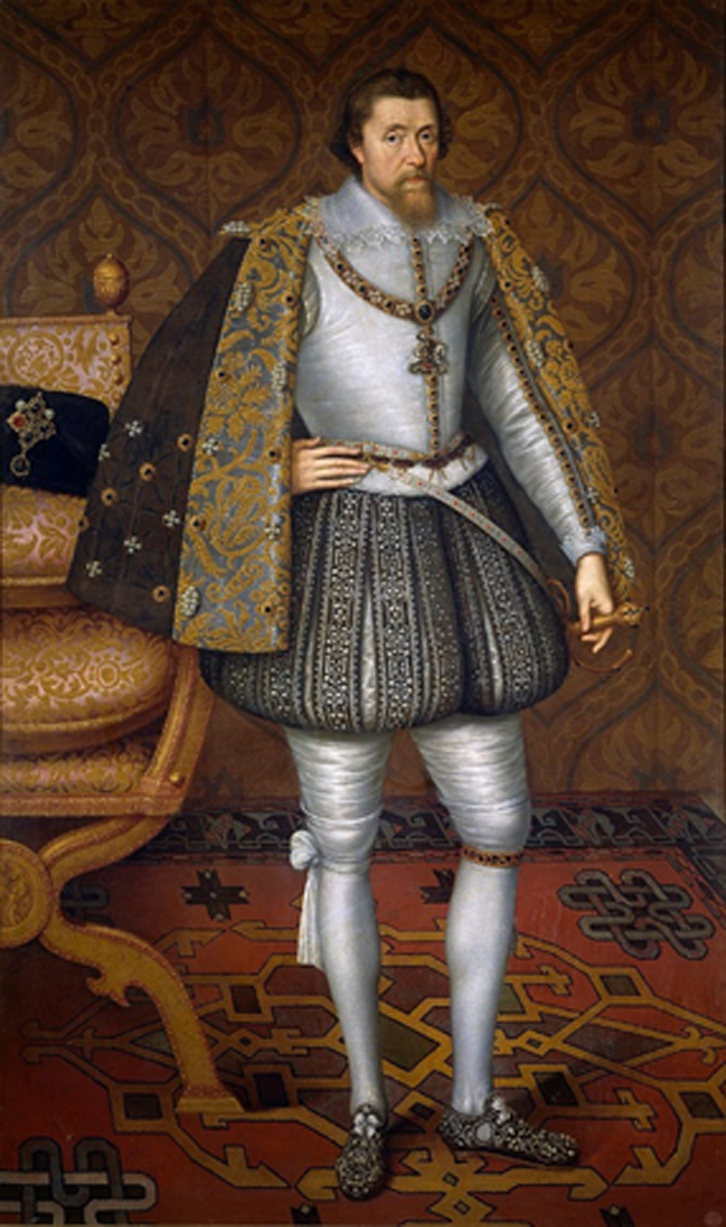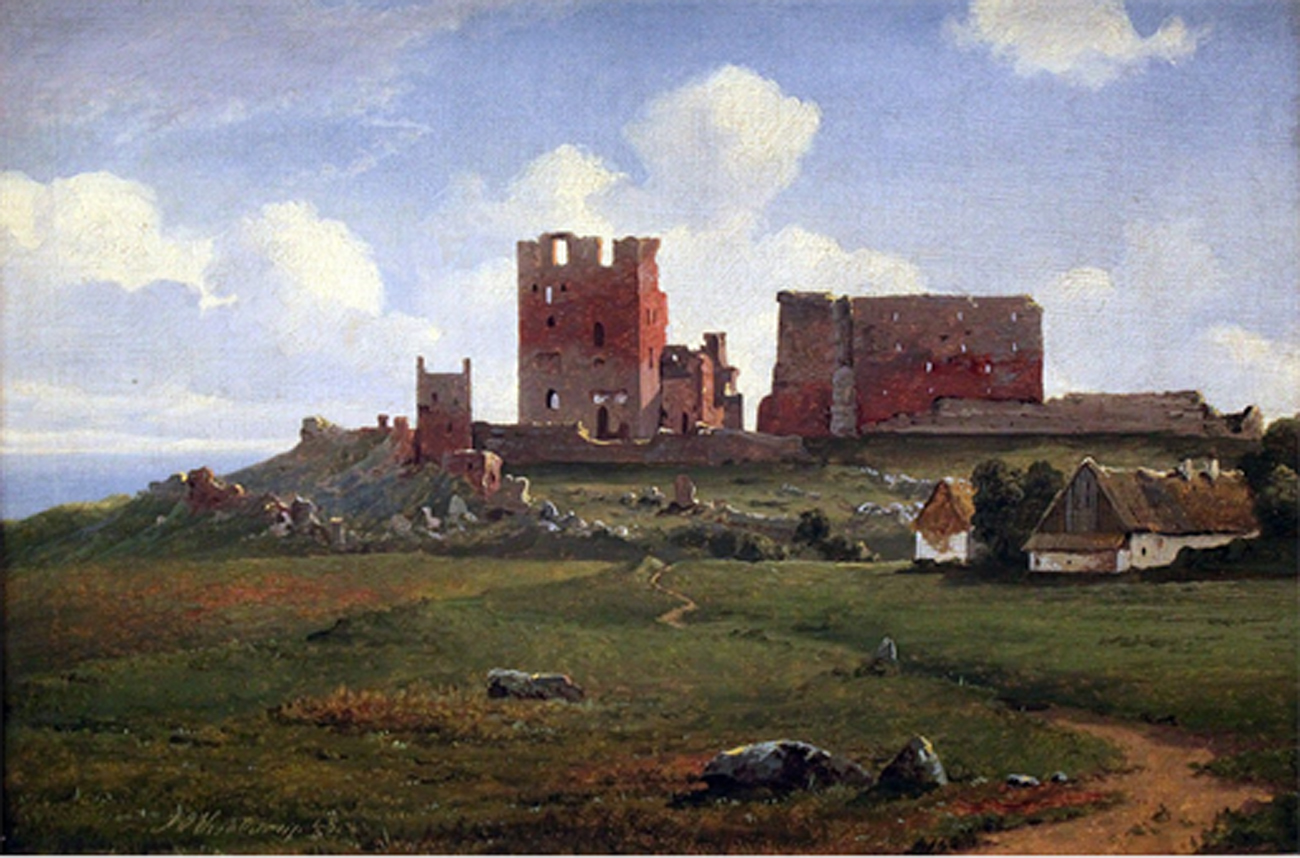The Sinclairs of Sinklarsholm
On New Year’s Day 1555 at Ravenscraig Castle in Fife, Janet Lindsay of the Byres gave birth to another son by Henry Lord Sinclair; a third son whom they named Andrew. Little is known of his early life, but he was highly educated for the time, particularly in languages, politics and courtly manners and just like many other young men from noble families, Andrew had been sent abroad to complete his education, spending some years at the court of Henry I, the Duke of Guise and his wife Catherine of Cleves.
In 1589, the marriage had been arranged between King James VI of Scotland and the fourteen-year-old Anne, daughter of King Frederick II of Denmark. A proxy marriage took place in August and Anne shortly afterwards set sail for Scotland, but her ship was blown off course due to bad weather and she landed in Norway. In October, the Danish envoy, Steen Bille, Sir William Stewart of Houston and Andrew Sinclair arrived at Leith with letters from Anne to the Scottish king. This is the first appearance of Andrew in the records and quite how he ended up in Danish service is not recorded, although many Scots gravitated towards serving the Oldenburg royal family even prior to this marriage alliance with the Stuart monarchy and after it; the patronage of King James ensured greater promotion in his brother-in-law Christian IV’s service than if these young Scots had remained at home.
From Scotland, Andrew sailed to Oslo with James, where the king and his bride were married on 23rd November that same year. Danish sources mention that Andrew was a tall young man and that he stayed in the entourage of King James whilst he was in Denmark until James returned to Scotland with his new bride in May 1590.
Andrew held positions at the Danish court; in 1591, he was appointed a gentleman to King Christian IV’s bedchamber and held that post until 1597, when he was appointed gentleman to the bedchamber of Queen Anne Catherine. Meanwhile, he was part of the Danish embassy to Scotland, attending the baptism of Prince Henry at Stirling Castle in 1594, when King James gave Andrew a hat badge worth 80 French crowns. Andrew wrote to King James several times; in 1596 to apprise him of the coronation of King Christian in advance of any official diplomatic notification, and again in 1597 to forewarn him that King Christian and other German princes intended to visit him in the spring along with the Queen’s brother, the Duke of Holstein. He officially became the Danish-Norwegian envoy to the Stuart court in 1603 following King James’ ascension to the English throne. The extant letters of King Christian also indicate that Andrew also kept in contact with other Stuart court diplomats elsewhere in Europe.
On 23rd November 1600 Andrew married Kirsten, daughter of Erik Kaas at the Royal Palace in Copenhagen. Kirsten was maid of honour to the Queen and a member of the noble Danish family of Sparre. After his marriage, King Christian appointed Andrew as a ‘lensmænd’ or sheriff of Gladsaxe in Scåne, a province in southern Sweden. He would have been the local representative of the king, responsible for collecting taxes, in charge of the military, had the authority to appoint judges and was superior to all the lesser dignitaries in the area.
In June 1606, Andrew was in London on a state visit with King Christian when King James gave Andrew a gold chain. He also became embroiled in a row between Christian and Charles Howard, the Earl of Nottingham. Christian was preparing to leave London on his ship when the two men began arguing about times and tides. Christian insisted it was two o’clock, gesticulating with two fingers, but the Earl of Nottingham insisted Christian had made some crude insinuation about the age difference between himself (aged 70) and his very much younger wife, Margaret Stuart, daughter of the 2nd Earl of Moray, promptly taking offence. An angry correspondence ensued and as Christian’s envoy to the Stuart court, Andrew became involved when the Countess of Nottingham accused Christian of insulting her. In a letter to Arbella Stuart, Lady Beauchamp (first cousin of King James), Andrew wrote that King Christian hoped that Arbella would defend him. Ultimately, King Christian’s sister Anne asked her husband King James to remove Margaret Stuart from court in London, which put an end to the matter, although Margaret did return to court once it had all blown over.
In 1607 Andrew received a pension from King James of £1000. In April 1608, Andrew sent two Danish hounds to Prince Henry and around the same time wrote to the Earl of Salisbury thanking him for sending him the money from King James. In 1610 he wrote again to the Earl of Salisbury enquiring about his pension, whilst also asking if he could obtain a loan, as he had bought land for 40,000 crowns, a part of which he still owed.
In April 1611, Denmark declared war on Sweden. Known as the Kalmar War, Andrew was appointed Captain of a company in the King’s Regiment of Foot and participated in the Danish capture of Öland and then Kalmar, after which he was made military governor of that city until 1613.
In 1614 Andrew was again in London to request King James’ help in negotiating a settlement in King Christian’s dispute with Lübeck, Germany. Whilst there, he also spoke with the Venetian Ambassador about Denmark’s ratification of an agreement between Saxony and Brandenburg, also in Germany. On that visit, King James gave Andrew a diamond, which he had recently bought for £320.
In 1615 Andrew was appointed Colonel of the Scånian Regiment, and on 2nd December the following year at Kolding in Denmark, the king was so pleased with ‘den kiække Sinclair’ (the handsome Sinclair) that Andrew was one of only twelve men to be made a Knight of the Order of the Armed Arm, a new order set up by King Christian to reward those nobles who had distinguished themselves militarily during the Kalmar War.
In 1617 Andrew was appointed a member of the ‘Rigsråd’ (the Danish Privy Council) and between 1606 and 1621 he made many trips to England, with his final visit in 1624. In that same year, he was charged with repairing the fortress at Kristianstad in Skåne before the impending war with Sweden. By 1622 he had been appointed Commander of the Danish-Norwegian forces east of the Baltic Sound.
‘Sir’ Andrew, as he was known from 1616, was lensmænd of Gladsaxe from his marriage until 1621 and this estate was expanded in 1616 with an additional 22 farms from the parish of Jærestad, possibly to compensate for damage to the surrounding lands through warfare. He was also lensmænd of Gislöv from 1613, Landskrona from 1619 to 1621, and then Hammershus, on the island of Bornholm, with its 13th century fortress, from 1621 until his death. In 1610, the king gave him land at Sandbygård in Scåne and Andrew added to it, buying half the parish of Kviinge, plus land at Gumlösa, Sörby, in Göinge parish, where he began to build Sinklarsholm on the banks of the Alma River. Sinklarsholm was not finished until after Andrew’s death on 17 January 1625 and was inherited by his eldest son James.
Sir Andrew and Kirsten Kaas had at least four sons and one daughter: James (or Jacob) born about 1603, Christian born in 1607 (King Christian was his godfather), Henrick/Erik who died as a young child, and Robert, born in 1610, who may also have died young. The only mention of Robert’s birth is in a letter from Sir Andrew to Robert, Earl of Salisbury, asking permission to name his newly born son after him and whether Robert would be the child’s godfather. Their daughter Johanne married Jesper Gøye, lensmænd of Brunla and Numedalen in Norway from 1619 until 1622, when her husband died, owing money. A few years later in 1631, King Christian declared that Johanne, still a widow, had settled her husband’s debts, the last record of her is in 1643 living at a farm named Esperød.
James the eldest son, also served both the Stuart royal house during the English Civil War as well as his Danish homeland in military capacities, serving in Norway and ultimately becoming a lieutenant colonel. In 1655 he was given the farm of Kuroen in Nordland, Norway, by King Frederick III of Denmark. Christian, Sir Andrew’s other son, inherited Sandbygård in Scåne from his father and had an extensive education, studying in Germany, the Netherlands, Britain and France. He then became secretary to the Danish Chancery in 1634 until 1639, when he became a lensmænd at Hørje in Scåne. When war broke out in 1643 he was commissioned as a major in the army and died in 1645.
DESCENDANTS
2. Col. James/Jacob Sinclair of Sinklarsholm (c.1603-aft. 1655)
m. 1635 (1) Francesca, dau. of Sir Henry Beaumont of Stoughton Grange, Leicestershire
m. (2) Elizabeth Turpin
Anders Schrod (b. 1680 Brønshøj, Copenhagen)
4. Maj. Christian Sinclair (1607-1645) m. 1639 Lisbet Clausdatter Below ( -1642) no issue
5. Robert Sinclair (1610-) died young
